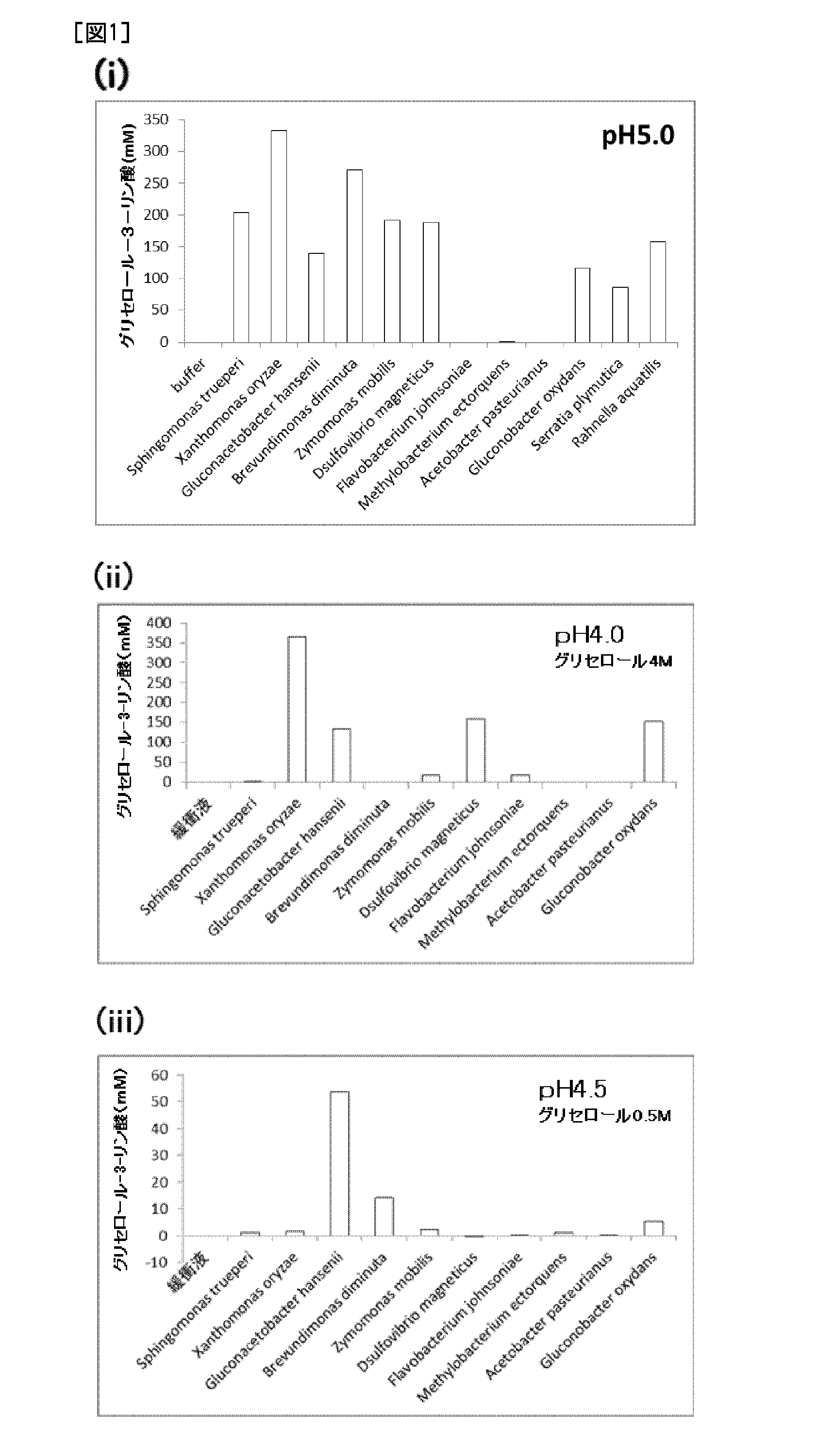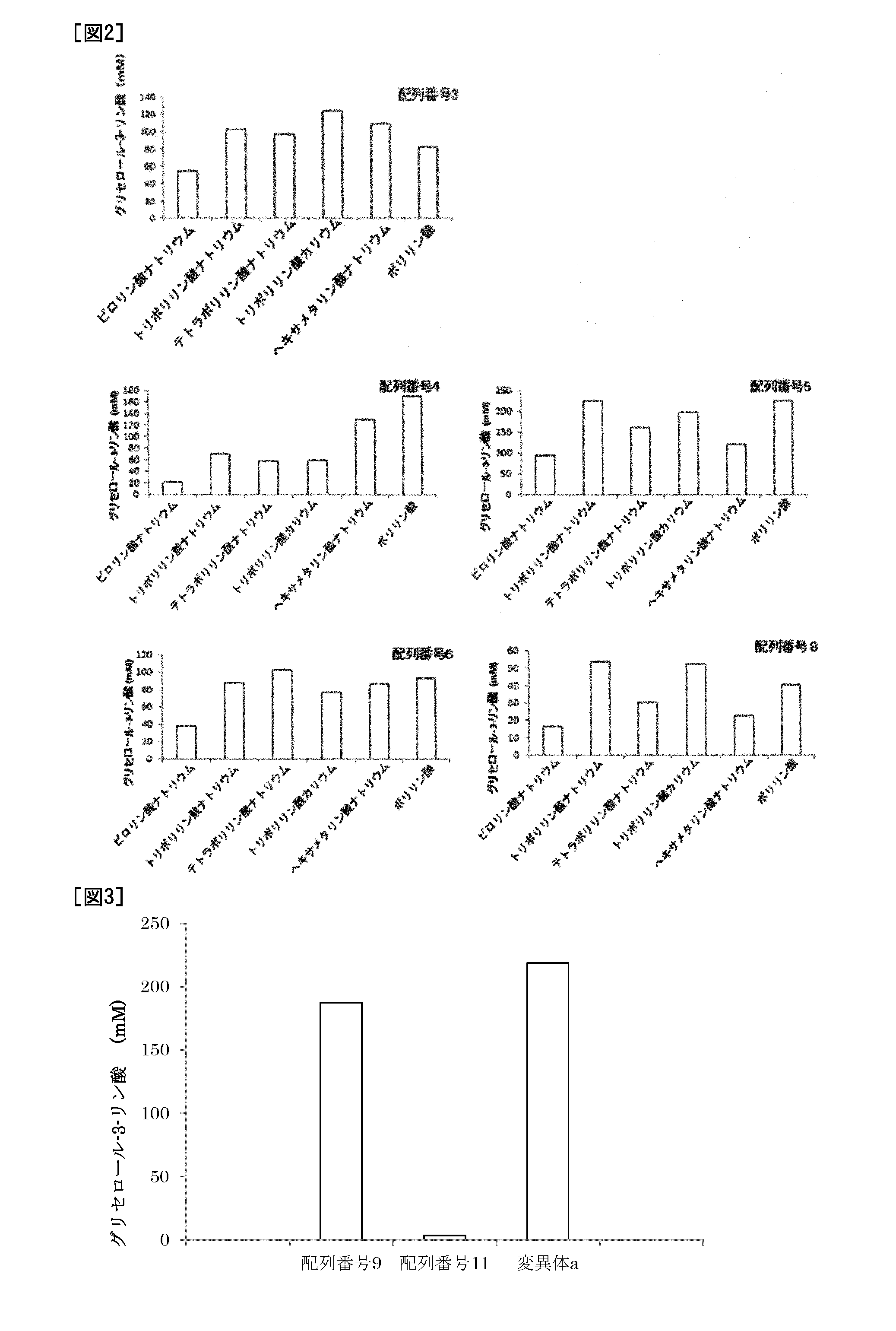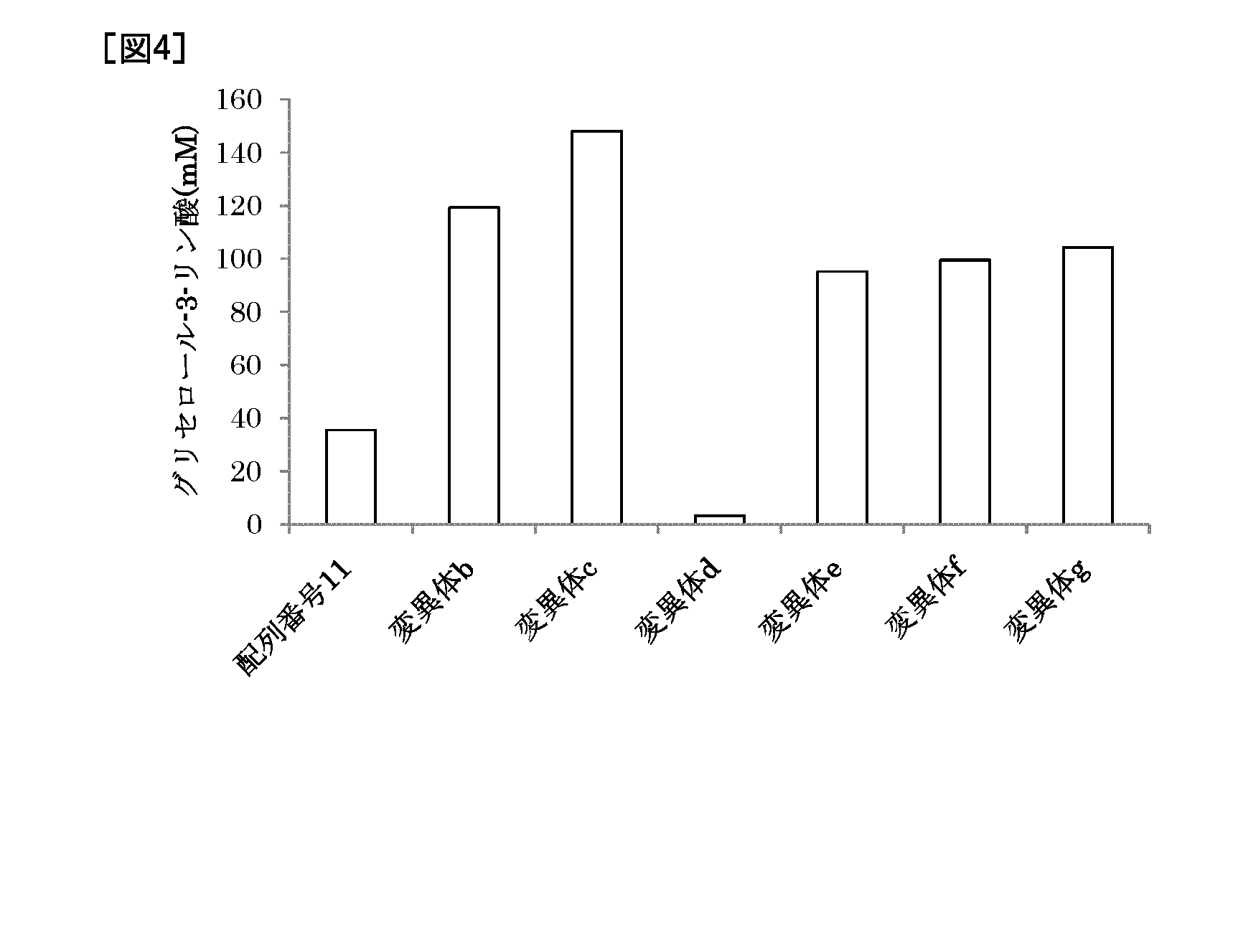Production method for glycerol phosphate
a phosphorylated glycerol and production method technology, applied in the direction of biochemistry apparatus and processes, enzymes, fermentation, etc., can solve the problems of increasing production costs and not always achieving the efficiency of the phosphorylation reaction, and achieve the effect of reducing production costs and enhancing the efficiency of the phosphorylation of glycerol
- Summary
- Abstract
- Description
- Claims
- Application Information
AI Technical Summary
Benefits of technology
Problems solved by technology
Method used
Image
Examples
experimental example 1
[0141]The microorganism-derived phosphorylating enzymes obtained as described above (which are represented by SEQ ID NOs: 3 to 12, 104, and 105) were used to phosphorylate glycerol. Conditions for and results of the glycerol phosphorylating reaction are indicated below.
[0142]Phosphorylation of Glycerol
[0143]To ultrapure water were added glycerol (4 M or 0.5 M), a polyphosphoric acid as a phosphate group donor (4% by weight; manufactured by Nacalai Tesque, Inc. under a trade name of polyphosphoric acid), and Triton X-100 (0.1% by weight), to prepare a reaction mixture solution. When glycerol was used at a concentration of 4 M, the pH of the solution was adjusted to pH 4.0 or 5.0 with KOH; and when glycerol was used at a concentration of 0.5 M, the pH of the solution was adjusted to pH 4.5 with KOH. Further, the phosphorylating enzyme including one of the amino acid sequences set forth in SEQ ID NOs: 3 to 12, 104, and 105 was added to the reaction mixture solution to make a final conc...
experimental example 2
Examination of Phosphate Group Donors
[0150]The efficiency of the phosphorylation of glycerol by phosphorylating enzymes (SEQ ID NOs: 3 to 6 and 8) was examined by changing the type of phosphate group donor. As a phosphate group donor, use was made of sodium pyrophosphate, sodium tripolyphosphate, sodium tetrapolyphosphate, potassium tripolyphosphate, sodium hexametaphosphate, or polyphosphoric acid. The polyphosphoric acid used was a polyphosphoric acid manufactured by Nacalai Tesque, Inc. The concentration of a phosphate group donor was set to be 0.2 M, except that the polyphosphoric acid was set to be at 7.5% by weight. A phosphorylating enzyme (phosphorylating enzyme set forth in SEQ ID NO: 3 to 6 or 8; 0.02 mg / mL each), a substrate (glycerol; at a concentration of 1 M), and a phosphate group donor were added to ultrapure water to prepare a reaction solution. The pH of the reaction solution was adjusted to a pH of 5.0 with potassium hydroxide or acetic acid. The reaction was carr...
experimental example 3
Phosphorylation of Glycerol by Phosphorylating Enzyme Mutants
[0156](3-1) A Mutant Having Mutations Introduced in the Vicinity of the Active Center
[0157](Introduction of Mutations and Generation of Transformants)
[0158]Mutations were introduced into a phosphorylating enzyme including the amino acid sequence set forth in SEQ ID NO: 11 that did not have any detectable activity to phosphorylate glycerol, to generate an enzyme mutant, Mutant a. The generation procedure is indicated below.
[0159]To obtain Mutant a, PCR reactions were performed using as a template a base sequence encoding the amino acid sequence set forth in SEQ ID NO: 11, and combinations of the primers indicated in Table 3. The resulting PCR product was digested with the restriction enzymes described corresponding to the column of Mutant in Table 3. Ligation was performed between a pET22b(+) vector (Novagen) treated with the same restriction enzymes as those with which the PCR product had been treated and the restriction e...
PUM
 Login to View More
Login to View More Abstract
Description
Claims
Application Information
 Login to View More
Login to View More - R&D
- Intellectual Property
- Life Sciences
- Materials
- Tech Scout
- Unparalleled Data Quality
- Higher Quality Content
- 60% Fewer Hallucinations
Browse by: Latest US Patents, China's latest patents, Technical Efficacy Thesaurus, Application Domain, Technology Topic, Popular Technical Reports.
© 2025 PatSnap. All rights reserved.Legal|Privacy policy|Modern Slavery Act Transparency Statement|Sitemap|About US| Contact US: help@patsnap.com



